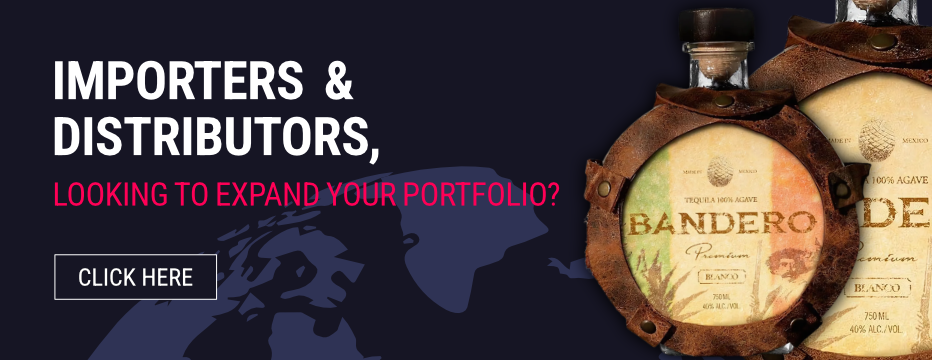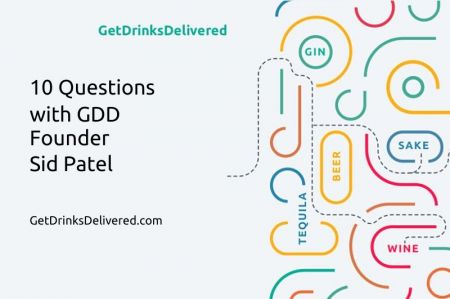Sommeliers Choice Awards 2024 Winners
How to Manage Cash Flow to Expand your Winery, Distillery or Brewery’s Distribution.
9 Tips to maximize cash flow, prepare for down turns and mitigate operational risk.

The goal of properly managing cash flow in a period of expansion is to be capable of covering your need for capital as your costs grow. Unfortunately, the more capital you need for growth the more demand there is on your cash flow and the less profitability there is in the venture.
Properly managed cash flow can grow your beer, wine or spirits from a locally distributed commodity to a national staple, but chances are you will need to take your operating profit and put it back into the company.
In other words, you can’t manage cash flow with profit as a priority if you plan on growing distribution. Unless you have somebody writing you a check, your money is coming from ‘out-of-pocket’ and the amount of money you can raise to invest in your expansion comes from the difference between your payables and receivables.
BTN Gets insight from Barefoot Wine Founders Michael Houlihan and Bonnie Harvey on generating a working cash flow budget, their biggest cash flow killers and their top tips for mitigating risk.
Tips on Generating Unconventional Cash Flow
1. Use your buyers as your banker.
One of the first things you will learn is that when buyers buy big they sell big. The reason they are buying big is because they know they can sell your product. Understanding this can give you the confidence to offer buyers discounts on larger orders they pick up and pay right away.
For example, find partners that have a history of buying a certain volume. Go to them and offer them a deal for 2X the volume at your pay-by-cash discounted rate, but give them a 4 or 5 day period to pay down the account. This way, you can receive the money in a week rather a month or two month period.
This type of deal only works with your largest partners, like direct to big box stores or government controlled monopolies. If you want a distributor to get on board, you’ll have to pre-sell your goods to their largest partners so that they don’t have to take on any additional risk.
2. Use your supplier as your Banker.
You can’t use your supplier as your banker unless your supplier trusts you. Your buyer has to believe that you’re always going to pay his bill. So if you know you can’t pay the bill, then you need to communicate with them. Tell them about the checks that you have coming in that are ear-marked for them and when you plan to bring the account current. Never put them in the uncomfortable position of collecting. The biggest relationship killer is to ‘run-and-hide’ from your unpaid accounts, especially when the people you are doing business with are waiting for your payments to pay their own bills.
You need to meet with the people you are doing business with on a quarterly basis. Tell them what your goals and challenges are and what you are doing to increase your business. They understand that when you increase your business they are also increasing their business, so give them the overall picture and ask them for their help.
If you are planning to expand into a new market then communicate your supply needs. Tell your suppliers that you need to up your orders, but don’t have the cash flow to buy it up front. If you have been developing your business model around the same supplier, then they should see that fronting you the goods will benefit them in the long run. Increasing your credit with your supplier and thereby reducing your needed cash can give you the extra wiggle room you need to successfully expand.
Tips on Using Operational Standards to Save on Costs
3. Understand Your Costs
If you can’t wrap your head around how to scale your business at the same time as you are trying to run operations, then get somebody who does. Hire a cost accountant. These guys specialize in understanding the relationship between the cost of goods and the cost of sales.
As you expand, your variables can really put a wrench in the works. It can get complicated when you are working in new regions with different retailers using exclusive distributors who all want a different price for your various products and you can develop a big headache trying to maximize the variances in volume, costs, shipping, pricing as well as everything else that comes with doing business in new markets.
You cost accountant will be able to tell you how long it will take in days, months or years to show operating profit. A lot of people think they can go through brokers, but you’ll need to be putting your operating profit to work on your own payroll no matter what. Once you are in the black, invest money into growing your money and looking at further expansion.
4. Expand Slowly
Make sure you cover all your bases when you are expanding. You will need to hire new reps in new territories and understand all costs associated with doing business in the new market. You want your own management and sales force properly installed in each territory before you think about expanding again. It is much better to be a top seller in a niche market then a mediocre seller in a big market because your reputation always proceeds you.
When you go into a new market, you are cash-out-of-pocket for close to a year. The amount of money you need to get sales running smoothly is intimidating because it seems like you aren’t making enough money to justify the kind of expenses you incur. You have to be patient and believe in your plan. That’s why it’s good to get a cost accountant working for you who can clearly delineate a plan that shows you an ultimate intersect between cost and revenue.
When you hire your new regional representative they are going to want a $40k-$60k base salary whether or not they make a sale. It’s a tough pill to swallow when you are trying to minimize your costs in a new market, so be sure to structure your sales rep salaries so they are hungry enough to make another sale. Don’t take the first rep that comes along - take your time and choose somebody who is ready to put in the due diligence and grow with your brand.
5. Outsource as much as possible
If your ultimate goal is to run a profitable and expanding company, then find ways to outsource your supply needs. You don’t need to grow your own hops or own your distillery to have a successful business. There are plenty of vineyards who aren’t selling grapes and there are plenty of vineyards who are underutilized who need your business.
You’ll need to write very clear agreements for the quality of the goods and services you are willing to pay for. If they don’t give you the quality that the promised you, make sure you don't need to pay top dollar for it.
If you have vetted interest in every aspect of your supply chain then your goods become tied to the operational costs associated with the final product. This means that if you have your bottling line break down or it hails in your vineyards then you are stuck going to market with an expensive, potenially sub-par product. With contracted services, you can really limit your risk and investment by working with in confines of solid contracts.
Don’t be production minded, be sales minded. What happens to the majority of brands that fail is that they are forced into sales because they are producing goods. They feel obligated to bottle their goods, put a label on it and go to market. That is production driven sales and is the wrong way to build a brand in the US.
The way to successfully build a brand is to start with a purchase order and work backwards. In other words, don’t produce goods if you can’t sell them. If you make it and you can’t sell it, then you are going to destroy your cash flow.
This is another reason to start slow if you are selling vintage wine or production goods. It’s better to sell out than to have too much, but neither is desirable. To maximize sales and keep your partners happy, you always want to be able to stock shelves no matter how fast your velocity is. If you are outsourcing contract goods and services, you have a better chance at keeping up with supply demands across multiple markets.
Being Prepared Can Save Your Cash Flow
6. Getting a Big Order is a Big Responsibility.
When you have to bottle up for a big order you need to go back to your suppliers and ask them for help. They need to believe that you are going to take them with you as you grow, so give them the opportunity to take on this challenge with you.
Your suppliers generally work with multiple customers, so they may have to take a risk on providing you with the extra supply over giving it to their other existing accounts. If that’s the case, then that supplier might potentially lose a customer while increasing their stock in your success. This again exemplifies the fact that developing longstanding relationships with your suppliers is so important.
7. Be Prepared for the Non-Paying Buyer
Getting the run-around is never fun. The way to minimize the chances at accruing non-paying accounts is to get your accounts receivable department develop working personal relationships with the accounts payable departments of your buyers. This means that your employees know the name of the person who writes the checks and they know when those checks are being written. The more personal the relationship the higher up the check stack you will be.
8. Be Ready for Distributors who Don’t Participate (or Stop Participating) in the Cost of Programming
No matter what market, programming is an essential tool for successful sales. If you are doing all the programming yourself it can be a big financial burden. You need to make a long term agreement with your distributors about what you can expect in terms of support.
Evergreen agreements (which means that you sign 3 year contracts that are renewed every year) are a good way to start. These can drastically reduce the cash flow risks you have in terms of developing successful sales programming in new markets.
These types of agreements are usually account to account. For instance, if your distributor is supplying a large retailer in Florida, then you need to have an agreement with your distributor that clearly states the programming expectations for both you and your distributor in that account. The whole idea of price reduction is that it starts with the producer, but if the distributor doesn’t cooperate then the producer has to pay 100% of the price reduction because they don’t want to risk getting discontinued by the large retailers. In the government control states, the producer has to do all of the programming 100% of the time.
These are the issues with programming that you need to plan for BEFORE they have a devastating effect on your cash flow. Always understand your programming responsibilities and have contingency plans for when these responsibilities are increased due to unforeseen circumstances.
Always Be On Your Toes
9. Discontinued
Last but not least is the dreaded Discontinued. If a buyer decides to bring in another product and discontinue your brand then you will need to find a way to replace those sales to balance your cash flow. This generally happens about once a year in January and February.
What you can do is to look at the product that is replacing yours and find out where they are coming from or look at the market and see where other brands have been discontinued. Once you have some good targets you can approach the distributor or retailer and offer your product as a superior alternative. Outline your established chain of sales and show them that you are primed for success.
The other way to avoid a DC is to understand the metrics that the buyer uses every year in January and February to cut underperforming products. In October and November you should know if you are ‘on-the-bubble’ or not. You always want to have a representative in the territory so you can see this kind of problem coming. Your rep should know that your numbers are off way before the OND sales period and you should be developing a program, ad or community outreach strategy that focuses on optimizing distributor metrics as well as increasing demand and sales during the holiday sales period.
Not a BTN Member yet?
Get BTN Premium membership and have full access to articles and webinars on BTN + other benefits like:
Full Access to BTN Consultants
Full Access to Buying Leads
Post Unlimited Brands
Full Access to all Articles and Webinars
Full Access to BTN Live conferences presentations and speaker sessions
Discounted rates to exhibit at major partner events and conferences
And Much More...
Your BTN membership will reduce your trial and error time: Why experiment with your branding and distribution when you can fast-track your time to success? Get 'How to do it' content which will help you improve your sales and grow your distribution. Just one article can help you make better decisions and improve your distribution strategy. Try it






.jpg)








